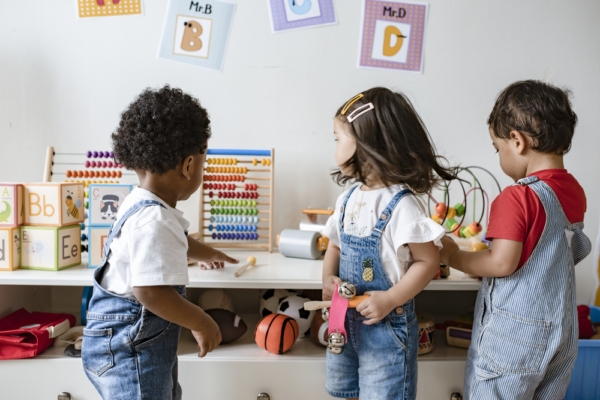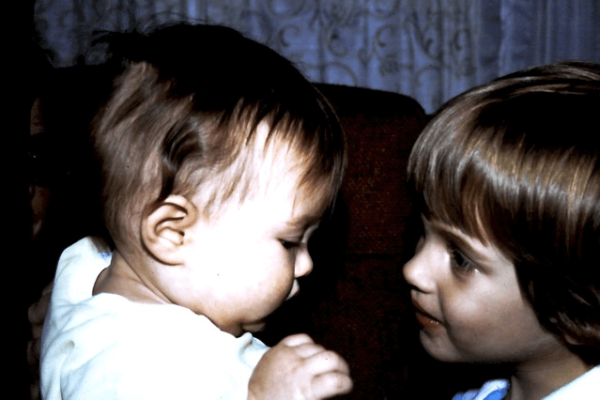Teaching kids how to manage anger
One thing I adore about Positive Discipline is how much time and effort is spent on teaching children how to recognize and handle their emotions. It is so powerful to teach that all feelings are valid (though their actions because of those feelings may not be)! What a relief for a child to know that it’s okay to be angry, and that it will pass. Anger doesn’t feel good, but knowing that it’s both normal and temporary sure helps.
Jane Nelsen talks about not knowing that anger was a feeling as a child and thinking it was a withdrawal of love. She thought that “people would stop loving me if I got angry.” How challenging would it be to not only feel like your emotions (which are out of your control) are wrong but that love is on the line too- yikes!
One Positive Discipline tool we can use to teach children about anger and strategies to calm down when they are angry is to make an Anger Wheel of Choice together. I was a bit skeptical of this at first because I couldn’t imagine a raging child using this tool, but I can assure you I’ve seen this tool work with very angry children. I think it’s a huge relief to them to know that there’s a ready, accessible tool just waiting for them to use when they’re that upset. When I’m truly angry, I’m not accessing my most creative, reflective parts of my brain that are full of calming ideas, and neither are they!
So let’s have those ideas ready for them.
Making the Anger Wheel of Choice
What is an Anger Wheel of Choice? The wheel is simply a visual pie chart that will remind an upset child of some strategies they’ve chosen to include that may help them feel better and calm down when they are angry. Making the Anger Wheel of Choice is something that will happen during a calm time, not in the heat of the moment. Can you imagine asking a furious preschooler to sit & work on brainstorming solutions in the middle of the drama? No way! This is for a calm, collaborative time.
Start this conversation by openly discussing anger. Reassure the child that anger is a normal feeling and that everyone gets angry.
“It’s okay to feel angry, but it’s not okay to hurt our bodies or others.”

Talk about what it feels like when they’re angry. You can remind them of times they’ve been really mad in the past and ask if they were angry forever or if they felt better. What made them feel better? This could be an excellent time to share your own stories about anger or read some of the amazing books about feelings like “Moody Cow Meditates” by Kerry Lee MacLean, “When Sophie Gets Angry – Really, Really Angry…” by Molly Bang, or “Sophia’s Anger Wheel of Choice” by Jane Nelsen.
After your intro, work together to brainstorm a list of calming options to include in the Anger Wheel of Choice. Feel free to make suggestions, but this is your child’s list of ideas that calm them down. There are many resources available for ideas to calm down like these great tool cards from Sound Discipline. You may need to suggest some ideas, or your child might already know what they’d like to include.
The children I’m caring for right now have some of these ideas listed:
- Take a break outside
- Lay in my bed with my stuffed animals
- Legos
- Get a hug or snuggle from my grown-up
- Rest on the couch
- Sing or talk about my feelings
- Have a snack
- Wash hands or water play in the sink
- Get a big drink of water
- Draw a picture
Other ideas your child might like:
- Play-Doh or sensory play
- Listen to music
- Read
- Large body movement or exercise
- Yoga
- Breathing strategies
- Blow bubbles
- Journal/drawing
- Add the issue to the family meeting agenda
- Ask an adult to help
- Count to ten
As long as the ideas and strategies are reasonable, add them to the brainstorm list. If they have a suggestion that is just too messy or impractical, it’s okay to say that that’s not the right choice for this wheel but an activity for another time.
It is also okay if they choose strategies or ideas that are not something that calms you down; this is specific to the child.
You’ll have to decide how many “slices of pie” to include on the wheel – each spot on the wheel will represent one calming option. The preschooler & early elementary children in my care right now both have six choices on their wheels. Younger toddlers might only need 3 or 4, and older children might have more ideas they’d like to include.
Once they’ve settled on which strategies to include, it’s time to finally make the Anger Wheel of Choice! You and your child can decide how much effort, time, and how fancy this wheel will be. I like to laminate mine so they last longer and can be taped up and pulled down as needed, but it can be as simple as some marker drawings on a notebook paper or get more involved. Some people use real photographs of the child showing each option and use big, bright poster boards. Do what works for your and your child. Give ownership to your child by letting them do as much of the writing, drawing, and decorating as possible on their wheel – this is their tool. Younger children will need more help than older children will throughout this process. If you have multiple children, they will each have their own wheel.
Using the Anger Wheel of Choice
After making & posting the Anger Wheel of Choice, practice using it! Remember that these are activities & strategies that your child suggested, so they’re likely things that they enjoy doing. Choose a calm time to practice. An easy way to suggest this can be finding a character who is angry in a book or on a show. It might sound like, “Oh! I see in this picture Alex is clenching his fists and making a mad face. I think he’s upset about his artwork getting ripped. Do you think he could calm down if he used one of your ideas on your choice wheel? Which one? Let’s practice!” Your child might also enjoy practicing these options together with you or teaching their stuffed animals how their strategies work. Try to find a time in their routine that you can practice one of the tools daily so it becomes a habit.
Now it’s time to actually put the wheel to use. When I see a child in my care is legitimately angry, I give a gentle invitation to use their Anger Wheel of Choice. “Do you want to see if anything on your choice wheel might help right now?” I do not force them or get into a power struggle with them about this. The more routine practice you have when they are calm, the easier it is for them to access these tools.

Jane Nelsen suggests using the Anger Wheel of Choice in conjunction with your Positive Time-Out Space which I second because you’re probably already on your way over to the Positive Time-Out Space when you are seeing the signs of an angry child with a flipped lid! All of the choices on the wheel should be things that are okay for them to choose. Calmly, and with few words, facilitate (if needed) their chosen activity. They might not need your assistance at all. An angry child might choose several of their strategies to use as they calm down.
After your child has calmed down, then you can problem solve, work on recovery, and/or teach how to take responsibility, make repair, and have a re-do. Revisit the Anger Wheel of Choice often to make sure the options are still working and are still engaging to your child. I’d recommend refreshing your wheel every 4-6 months at a minimum, but feel free to add and change it up whenever it starts to feel stale. Children can also make Wheels of Choice for all kinds of other things like identifying feelings, daily contributions in the home, and solving problems.
Setting up and practicing the Anger Wheel of Choice is a bit of a time commitment, but the pay-offs are huge! Not only do you have a new alternative to just saying “stop it” or “calm down,” but the tools within the wheel help kids practice coping skills, encourage children to talk about their feelings, build good relationship skills and emotional intelligence, and leave kids feeling empowered to problem solve.
Try making an Anger Wheel of Choice with your nanny kiddos today!
Want help in creating a calm down corner? Consider Generation Mindful’s Time-In Toolkit
This ToolKit is a step-by-step approach that supports YOUR mindset towards teaching and modeling healthy social emotional skills for and with kids, using preventative and responsive (strengths-based) practices instead of punitive or reactionary methods. GENM tools make the learning tangible, fun, and child-led- this is so important to cultivate intrinsic motivation: kids learn through relationship, autonomy, AND fun. When kids want to use their Time-In space all on their own, they are building that intrinsic motivation and skills that will last them a lifetime.
*Buy your Time-in Toolkit here.
*AS AN AFFILIATE, WE MAY RECEIVE COMPENSATION FROM GENERATION MINDFUL IF YOU PURCHASE PRODUCTS THROUGH THE LINK ABOVE. We only partner with people and companies that align with our mission and we wholeheartedly endorse Generation Mindful- tried, vetted and tested with our own kids!





Comments